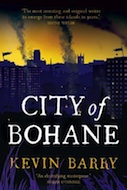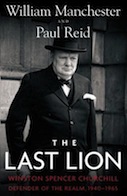Symtio is the hot topic in bookselling this week. Basically, it’s a plastic card (like a gift card) sold in a rack (at least as currently being tested in CBA stores) which you take up to the cash wrap and purchase. Then you take it home, input the code into your computer and download an electronic audio file or an ebook of the book you wish to “read.” The bookseller gets a percentage of the sale. To me this is a simple (and pretty good) idea made needlessly complicated.
Space
For one thing, most bookstores are small spaces and adding a large fixture (as shown in the video) would either further clutter the sales environment or displace shelves of real books. I don’t see many bookstores taking the gamble of replacing a proven desired commodity (the physical book) for something that seems of such limited utility. Maybe as a shelftalker displayed alongside the book the card might seem simply another option, but then again this would only heighten the contrast between the instant gratification of the physical book and the nebulous uncertainly of the delayed download.
Short shelf life of tech
I can already see the cards being replaced (far more cheaply) by QR codes on shelf talkers, or even plain old barcodes. Take a picture of the QR or barcode with an app you download to your smartphone for free and be taken to a page to buy and download the ebook. The store could get a cut, the shelftalker would be cheaper (and greener) than packaged plastic cards and they could be bundled as part of a coop program. Yes, plastic cards are shiny and doubtless rugged, but so what? How long is the viable shelf life of the average frontlist book? (Don’t answer that. You’ll only cry.)
Tech is changing so fast that I foresee reluctance on consumers’ parts to commit to another unfamiliar technical thingummy – and being asked to do so in the narrow aisles of a crowded store would not inspire confidence. I think many would prefer to go home and think on the purchase; and, once home they’d find all the info they need online and would likely make the purchase there. The card is just another intermediary between the book and the reader. The nature of digital communication is to remove the intermediaries: readers already interested in electronic texts will download them online, readers vaguely curious about electronic texts are more likely to be chased back to the known quantity by new and unfamiliar intermediaries, and, bookstores don’t want another account to manage when they already do business with the books’ original publishers.
It’s the right idea (give the bookstore a cut of the electronic sale and get POS placement), but I think it’s the wrong implementation.
Links
Promotional video for Symtio:
Harper Studio blog post about Symtio







6 comments
Comments feed for this article
March 13, 2009 at 10:22 am
Jess
I nearly spit out my tea reading this line on their site: “Customers purchase a new book in the form of a Symtio product card at any store where Symtio products are sold—this is the tangible element that keeps the retail experience familiar.” That last part is just silly!
I definitely wouldn’t want to buy a card so I can go home and download an ebook. Couldn’t you offer all the books you sell in store as ebooks on your website and advertise that fact in the actual store?
March 13, 2009 at 1:14 pm
Susanmpls
Rich, another thoughtful post! I’m a list person, so let’s make a little list. Here are the key issues to resolve:
1. Letting customers know, in the store, they can buy ebooks (and which ebooks)
2. Getting the store a % of the ebook purchase whether it’s done in store or remotely
3. Providing the mechanism/technology for download (in store or out) to the customer, onto the device of their choice
(yeah, there are other things too, but these seem like big issues, yes?)
1. Like you say in your post, this can be handled with instore signage, no massive display needed. Shelftalkers, various signs placed strategicially throughout store–what ever works in each individual store, done relatively cheaply.
2. Couldn’t customers buy from your store’s website, where ever they are (in store or not) and pay via your payment app? I don’t know the mechanics of this, but if you can do the sale online, then link to the download for the ebook file, all w/in the structure of your own web site, well, that would be ideal, yes?
3. This is the hurdle, IMO. That is, the interface that handles the technology of the actual download–is this complex? I don’t know, but would presume you would need a vendor who can seemlessly (and behind the scenes?) handle the mechanics of this process. That’s why I originally thought of Overdrive for this. But perhaps you need a vendor like CodeMantra, who stores the ebook files and makes them available for download, rather than a vendor who would act as a wholesaler of ebooks. This to me is the most difficult part of the problem and needs further thought to mechanically figure it out.
Maybe this is an overly simplistic view; as I’ve learned w/ our own ebook efforts, the devil is in the details. What am I missing (presumably something important and obvious)?
cheers,
Susan
March 13, 2009 at 11:01 pm
Ann Kingman
you know, I’m wondering if a computer terminal in the store linked to the store’s website would take care of this. Employees could be trained to help customers complete the process. If someone wants to buy an ebook as a gift, what about an old-fashioned gift card or paper gift certificate?
I realize that this is exactly like a clothing retailer where I shop often. If they don’t have what I’m looking for, or don’t have something I want in the right size, they offer to order it shipped to my home. They walk me over to a computer terminal, and I place an order through the website — the salesperson puts in a code for free shipping, and that’s that.
March 14, 2009 at 12:53 pm
Table of Contents; My Favorite Posts From the Last Week « Brews and Books
[…] department; a look at the returnable culture in the bookselling world and some questions about Symtio. [from The Word […]
March 14, 2009 at 1:00 pm
Bookavore
Ann, that is exactly what I’ve always dreamed of. Most bookstores already have computers, and many have a young buck who could help get it all set up (as we already recommend for getting started with e-newsletters and blogging). Maybe there is some way to do it through existing ABA e-commerce sites, as they already sell e-books?
March 15, 2009 at 12:06 pm
Rich
@Ann,
Yep, a PC makes sense. I’d bet many stores already have one that could be repurposed to act as a customer terminal: a cybercafe station which could serve a dual role or on old one gathering dust in a back corner or storage space.
Having the ability to sell ebooks for multiple devices through the ABA ecommerce solution is key, so I was very encouraged to see the ABA white paper earlier last week. Maybe we can start using the change is on the way slogan regarding ecommerce?